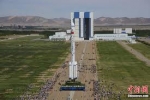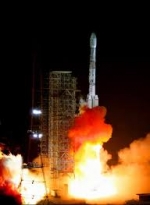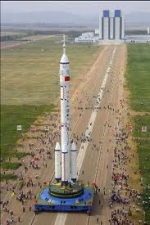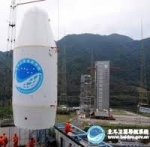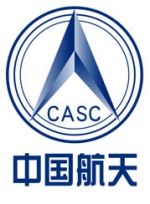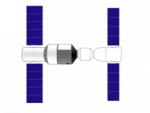Displaying items by tag: China
Go Taikonauts!
Go Taikonauts! is a quarterly issued magazine published as an iPad app.
This activity represents the private initiative of four individuals, two in Europe and two in China, and provides an independent summary and assessment of publicly-available material on space activities in China accessible in the Chinese media.
The primary objective of the magazine is to help people outside China to know and understand more about the Chinese space programme. Although there is a significant amount of information about space accessible in the Chinese media, and especially on the internet, only a small fraction of this is being translated into English.
We hope that this magazine will eliminate some of the misunderstandings about China, and assist in the establishment of cooperation between China and other countries.
Jiuquan Launch Center
The Jiuquan Satellite Launch Center (JSLC) is a space vehicle launch facility in China.
The Jiuquan Satellite Launch Center is the first and main launch site of China. It was created in 1958. The facility is part of Dongfeng Aerospace City (Base 10), and is located in the Gobi desert about 1,600 km from Beijing.
Hainan Space Launch Center
The Wenchang Satellite Launch Center (WSLC), or Hainan Space Launch Center, is a Chinese spaceport under conversion for operations in 2014. It is a former sub-orbital test center, located on the Hainan island, near the city of Wenchang.
It is the fourth and southernmost space vehicle launch facility (spaceport) of China. It has been specially selected for its low latitude, which is only 19 degrees north of the equator, which will allow for a substantial increase in payload, necessary for the future manned program, space station and deep space exploration program. Furthermore, it will be capable of launching the new heavy lift Long-March 5 booster currently under development.
Unlike the Space Centers on China mainland whose rail tracks are too narrow to transport the new five meter core boosters, Wenchang will use its sea port for deliveries.
Initial launches of the CZ-5 booster from Wenchang are expected in 2014, one year after the intended commissioning of the Wenchang Center.
Wenchang Satellite Launch Center (WSLC)
Wenchang Satellite Launch Center (WSLC), located near Wenchang on the north-east coast of Hainan Island, is a former sub-orbital test center currently under upgrade (Nov. 2012).
It is the fourth and southernmost space vehicle launch facility (spaceport) of China. It has been specially selected for its low latitude, which is only 19 degrees north of the equator, which will allow for a substantial increase in payload, necessary for the future manned program, space station and deep space exploration program. Furthermore, it will be capable of launching the new heavy lift Long March 5 booster currently under development.
Unlike the Space Centers on the mainland whose rail tracks are too narrow to transport the new five meter core boosters, Wenchang can use its sea port for deliveries.
Xichang Satellite Launch Center (XSLC)
The Xichang Satellite Launch Center (XSLC) is a China space vehicle launch facility (spaceport) approximately 64 km northwest of Xichang, in Sichuan, China.
The facility became operational in 1984 and is primarily used to launch powerful thrust rockets and geostationary communications and weather satellites. It is notable as the site of Sino-European space cooperation, with the launch of the first of two Double Star scientific satellites in December 2003.
China Aerospace Science and Technology Corporation (CASC)
The China Aerospace Science and Technology Corporation (CASC) is the main contractor for the Chinese space program.
It is state-owned and has a number of subordinate entities which design, develop and manufacture a range of spacecraft, launch vehicles, strategic and tactical missile systems, and ground equipment. It was officially established in July 1999 as part of a Chinese government reform drive, having previously been one part of the former China Aerospace Corporation. Various incarnations of the program date back to 1956.
Tiangong 1
Tiangong-1 is China's first space laboratory module, an experimental testbed to demonstrate the rendezvous and docking capabilities needed to support a space station complex. Launched unmanned aboard a Long March 2F/G rocket on 29 September 2011, it is part of the Tiangong program, which aims to place a larger, modular station into orbit by 2020. Tiangong-1 will be deorbited in 2013, and replaced over the following decade by the larger Tiangong-2 and Tiangong-3 modules.
Tiangong-1 will be visited by a series of Shenzhou spacecraft during its two-year operational lifetime. The first of these, the unmanned Shenzhou 8, successfully docked with the module in November 2011; the manned Shenzhou 9 mission is expected to launch to Tiangong-1 in June 2012.



